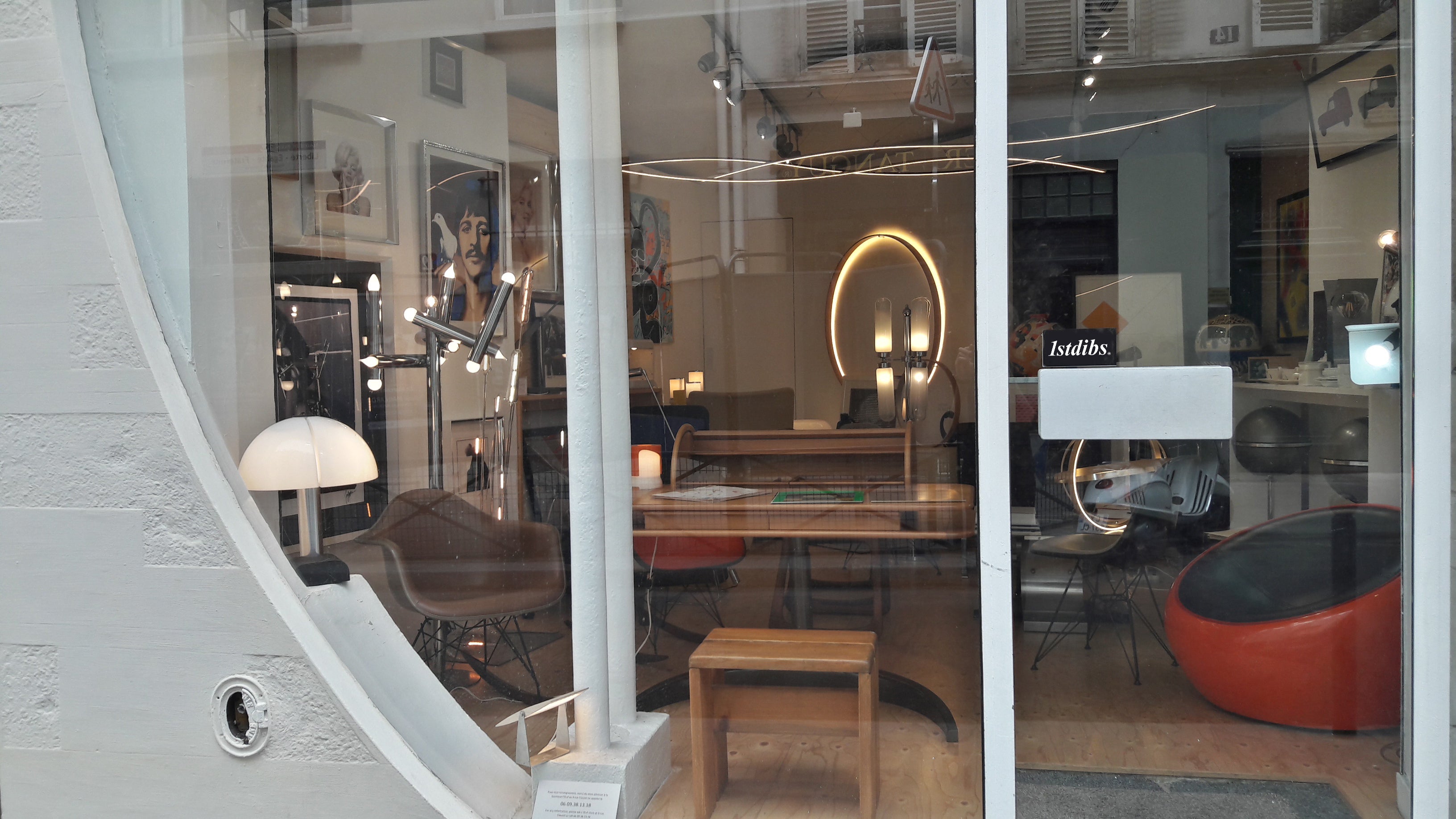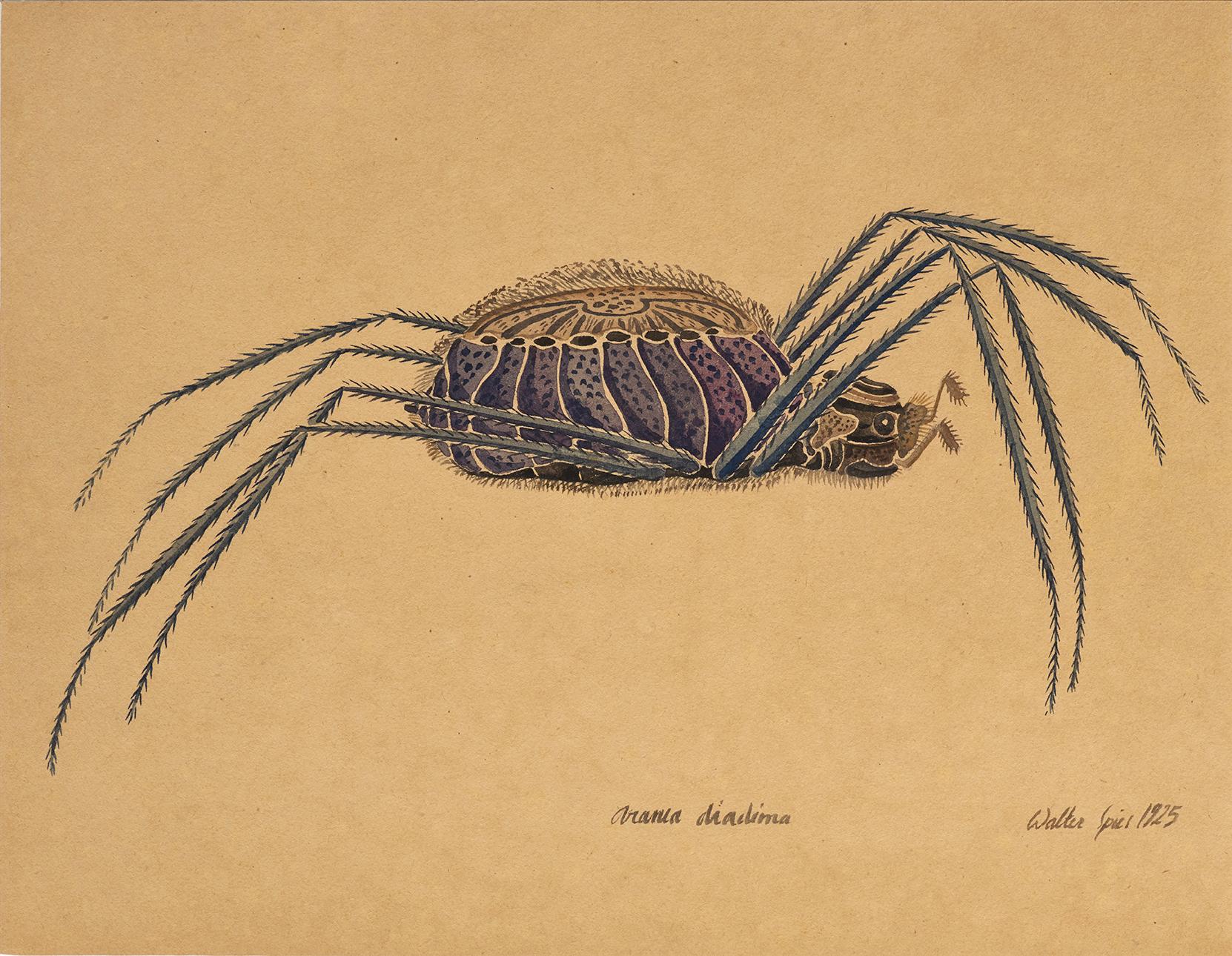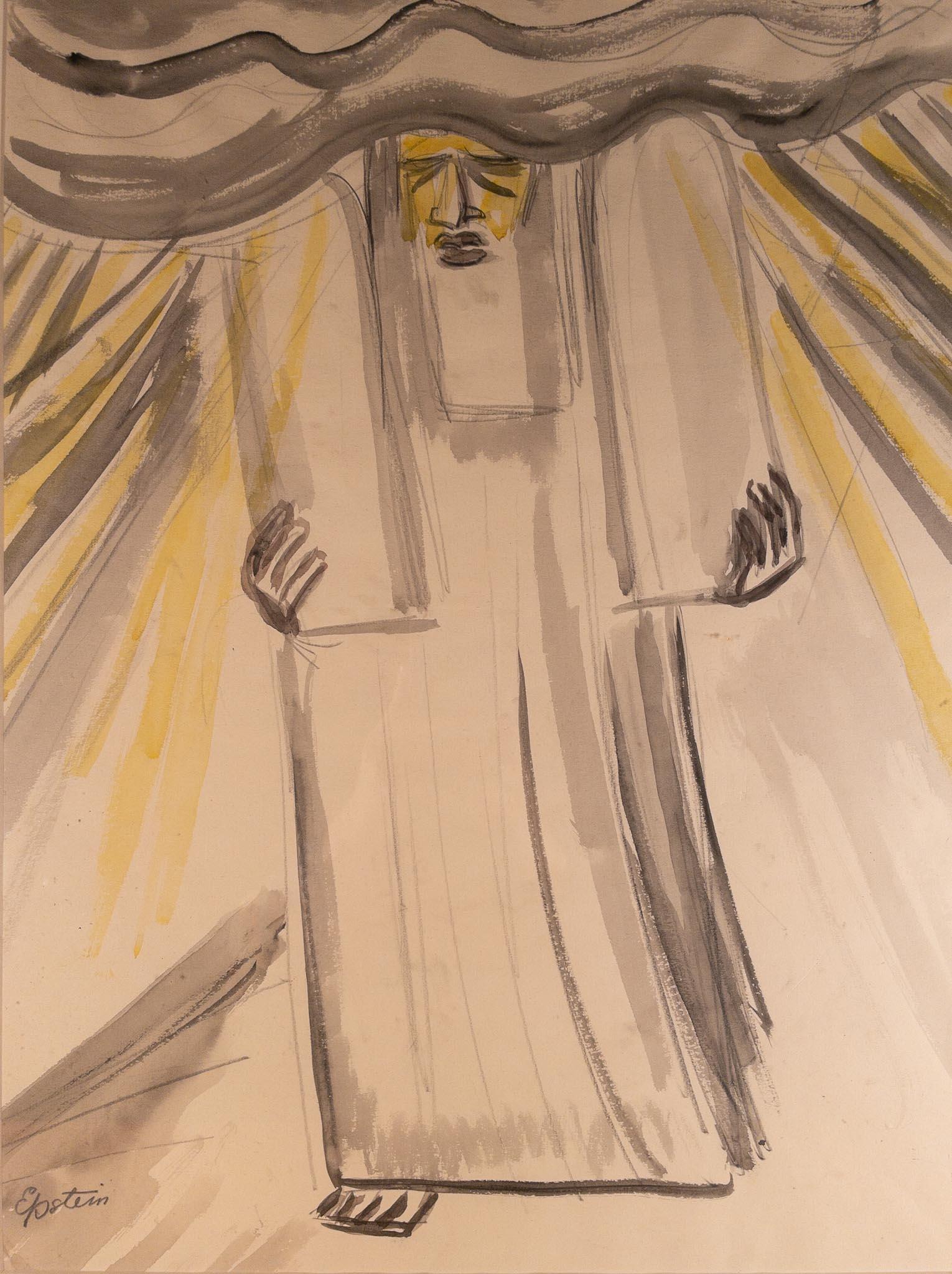Items Similar to The City - 1995
Want more images or videos?
Request additional images or videos from the seller
1 of 8
Gérard BlainThe City - 19951995
1995
About the Item
We are very happy to present the wonderful work of Gérard Blain, a passionate and talented artist.
Gérard Blain, born in 1938, is an atypical artist.
Coming from a modest family, having stopped very early in his studies, he became a waiter, a job he would do for many years before opening his own restaurant with his wife.
In parallel, he writes, draws and paints and even tries to sculpt. This self-taught artist learns by mimicry, reproducing the great masters but also his cat in motion.
The style of this passionate and talented self-taught has evolved over time and especially since the death of his wife. Before, he painted what he saw, since he paints what he feels. This overflowing creativity has become a necessary means of expression.
After a darker phase in his work, he now focuses on humor drawings, not unlike an artist whom he particularly admires: Sempé. Which leads us to conclude this portrait with a sentence of Gerard Blain: "Life must be funny".
Here is a first series of drawings filled with humor and life!
Single work.
Signed, with certificate of the artist.
Mixed media : felt, watercolor, gouache, colored pencil and chinese ink.
- Creator:Gérard Blain (1938, French)
- Creation Year:1995
- Dimensions:Height: 19.69 in (50 cm)Width: 25.6 in (65 cm)
- Medium:
- Period:
- Condition:
- Gallery Location:Saint Ouen, FR
- Reference Number:1stDibs: LU64633009251

About the Seller
4.9
Vetted Seller
These experienced sellers undergo a comprehensive evaluation by our team of in-house experts.
Established in 2015
1stDibs seller since 2017
383 sales on 1stDibs
Typical response time: 14 hours
- ShippingRetrieving quote...Ships From: Saint Ouen, France
- Return PolicyA return for this item may be initiated within 14 days of delivery.
More From This SellerView All
- Without BreakBy Gérard BlainLocated in Saint Ouen, FRWe are very happy to present the wonderful work of Gérard Blain, a passionate and talented artist. Gérard Blain, born in 1938, is an atypical artist. Co...Category
2010s Figurative Drawings and Watercolors
MaterialsWatercolor
- full moon - 2014By Gérard BlainLocated in Saint Ouen, FRWe are very happy to present the wonderful work of Gérard Blain, a passionate and talented artist. Gérard Blain, born in 1938, is an atypical artist. Coming from a modest family, h...Category
2010s Figurative Drawings and Watercolors
MaterialsWatercolor
- The louvre, The statueBy Gérard BlainLocated in Saint Ouen, FRWe are very happy to present the wonderful work of Gérard Blain, a passionate and talented artist. Gérard Blain, born in 1938, is an atypical artist. Coming from a modest family, h...Category
2010s Figurative Drawings and Watercolors
MaterialsWatercolor
- The Circus - 1987By Gérard BlainLocated in Saint Ouen, FRWe are very happy to present the wonderful work of Gérard Blain, a passionate and talented artist. Gérard Blain, born in 1938, is an atypical artist. Coming from a modest family, h...Category
1990s Figurative Drawings and Watercolors
MaterialsWatercolor
- Builders and crazy ideas of joyBy Gérard BlainLocated in Saint Ouen, FRWe are very happy to present the wonderful work of Gérard Blain, a passionate and talented artist. Gérard Blain, born in 1938, is an atypical artist. Coming from a modest family, h...Category
2010s Figurative Drawings and Watercolors
MaterialsWatercolor
- First Figures - 2013By Gérard BlainLocated in Saint Ouen, FRWe are very happy to present the wonderful work of Gérard Blain, a passionate and talented artist. Gérard Blain, born in 1938, is an atypical artist. Co...Category
2010s Figurative Drawings and Watercolors
MaterialsWatercolor
You May Also Like
- Italian Mixed Media Gouache Tempera Theatre Set Costume Silhouette PaintingLocated in Firenze, ITThis set of four antique 19th century Italian mixed media painting on paper hand made with gouache, tempera and watercolor, features several characters silhouettes acting in a theater play. These fine artworks are very unusual, they probably were sketches for theatrical costumes and sets. A rare example of Venetian 19th century theatrical figures in the scenery of Italian opera or characters of the Italian Commedia dell'arte. These four paintings featuring costume design figurines, with the characters acting in a theatrical set, are rendered through the decoupage technique mixing watercolor painting or gouache with tempera on paper. Each tiny figurine is made of paper hand-colored in watercolor, then cut and applied to an antique sheet...Category
19th Century Rococo Mixed Media
MaterialsPaper, Tempera, Watercolor, Gouache
- 19th century watercolour of a Girl at her Dressing TableBy William Henry HuntLocated in London, GBCollections: Muir Hetherington; Sir John and Lady Witt, acquired 1974; By descent to 2015. Literature: Tom Jones (ed.), William Henry Hunt 1790-1864, exh. cat., 1981, no. 145 (Girl in a bedroom); John Witt, William Henry Hunt (1790-1864) Life and Work, London, 1982, no. 553, p. 194, colour pl. 16. Exhibited: Wolverhampton, Central Art Gallery, Preston, Harris Museum and Art Gallery and Hastings, Hastings Museum and Art Gallery, William Henry Hunt 1790-1864, 1981, no. 145 as Girl in a bedroom (Lent by Sir John & Lady Witt) Framed dimensions: 20 x 20.75 inches This unusually charming and well-preserved watercolour was painted by William Henry Hunt in around 1833. Almost certainly depicting his young wife, Sarah, possibly in the interior of her family home at Bramley in Hampshire. This work shows Hunt’s remarkable virtuosity as a watercolourist, Hunt, for example, articulates the profile of his young wife, by leaving a reserve of white paper to suggest the light modelling her features. Throughout the 1830s Hunt made a sequence of richly painted interior views of both domestic and agricultural spaces which pay scrupulous attention to detail. Hunt was born in London, the son of a tin-plate worker and japanner. J. L. Roget recorded the observation of Hunt’s uncle: ‘nervy, little Billy Hunt… was always a poor cripple, and as he was fit for nothing, they made an artist of him.’ At the age of sixteen he was apprenticed to the landscape painter John Varley for seven years, moving to live with Varley at 18 Broad Street, Golden Square, London. There he made close friends with both John Linnell and William Mulready. Hunt worked at the ‘Monro Academy’, at 8 Adelphi Terrace, London, the house of Dr Thomas Monro, an enthusiastic patron of landscape watercolourists. Through Monro, Hunt was introduced to the 5th Earl of Essex...Category
19th Century Old Masters Figurative Drawings and Watercolors
MaterialsWatercolor, Pencil
- The Abduction of the Sabine Women , a Renaissance drawing by Biagio PupiniLocated in PARIS, FRThis vigorous drawing has long been attributed to Polidoro da Caravaggio: The Abduction of the Sabine Women is one of the scenes that Polidoro depicted between 1525 and 1527 on the façade of the Milesi Palazzo in Rome. However, the proximity to another drawing inspired by this same façade, kept at the Ecole des Beaux-Arts, and to other drawings inspired by Polidoro kept at the Musée du Louvre, leads us to propose an attribution to Biagio Pupini, a Bolognese artist whose life remains barely known, despite the abundant number of drawings attributed to him. 1. Biagio Pupini, a Bolognese artist in the light of the Roman Renaissance The early life of Biagio Pupini, an important figure of the first half of the Cinquecento in Bologna - Vasari mentions him several times - is still poorly known. Neither his date of birth (probably around 1490-1495) nor his training are known. He is said to have been a pupil of Francesco Francia (1450 - 1517) and his name appears for the first time in 1511 in a contract with the painter Bagnacavallo (c. 1484 - 1542) for the frescoes of a church in Faenza. He then collaborated with Girolamo da Carpi, at San Michele in Bosco and at the villa of Belriguardo. He must have gone to Rome for the first time with Bagnacavallo between 1511 and 1519. There he discovered the art of Raphael, with whom he might have worked, and that of Polidoro da Caravaggio. This first visit, and those that followed, were the occasion for an intense study of ancient and modern art, as illustrated by his abundant graphic production. Polidoro da Caravaggio had a particular influence on the technique adopted by Pupini. Executed on coloured paper, his drawings generally combine pen, brown ink and wash with abundant highlights of white gouache, as in the drawing presented here. 2. The Abduction of the Sabine Women Our drawing is an adaptation of a fresco painted between 1525 and 1527 by Polidoro da Caravaggio on the façade of the Milesi Palace in Rome. These painted façades were very famous from the moment they were painted and inspired many artists during their stay in Rome. These frescoes are now very deteriorated and difficult to see, as the palace is in a rather narrow street. The episode of the abduction of the Sabine women (which appears in the centre of the photo above) is a historical theme that goes back to the origins of Rome and is recounted both by Titus Livius (Ab Urbe condita I,13), by Ovid (Fasti III, 199-228) and by Plutarch (II, Romulus 14-19). After killing his twin brother Romus, Romulus populates the city of Rome by opening it up to refugees and brigands and finds himself with an excess of men. Because of their reputation, none of the inhabitants of the neighbouring cities want to give them their daughters in marriage. The Romans then decide to invite their Sabine neighbours to a great feast during which they slaughter the Sabines and kidnap their daughters. The engraving made by Giovanni Battista Gallestruzzi (1618 - 1677) around 1656-1658 gives us a good understanding of the Polidoro fresco, allowing us to see how Biagio Pupini reworked the scene to extract this dynamic group. With a remarkable economy of means, Biagio Pupini takes over the left-hand side of the fresco and depicts in a very dense space two main groups, each consisting of a Roman and a Sabine, completed by a group of three soldiers in the background (which seems to differ quite significantly from Polidoro's composition). The balance of the drawing is based on a very strongly structured composition. The drawing is organised around a median vertical axis, which runs along both the elbow of the kidnapped Sabine on the left and the foot of her captor, and the two main diagonals, reinforced by four secondary diagonals. This diamond-shaped structure creates an extremely dynamic space, in which centripetal movements (the legs of the Sabine on the right, the arm of the soldier on the back at the top right) and centrifugal movements (the arm of the kidnapper on the left and the legs of the Sabine he is carrying away, the arm of the Sabine on the right) oppose each other, giving the drawing the appearance of a whirlpool around a central point of support situated slightly to the left of the navel of the kidnapper on the right. 3. Polidoro da Caravaggio, and the decorations of Roman palaces Polidoro da Caravaggio was a paradoxical artist who entered Raphael's (1483 - 1520) workshop at a very young age, when he oversaw the Lodges in the Vatican. Most of his Roman work, which was the peak of his career, has disappeared, as he specialised in facade painting, and yet these paintings, which are eminently visible in urban spaces, have influenced generations of artists who copied them abundantly during their visits to Rome. Polidoro Caldara was born in Caravaggio around 1495-1500 (the birthplace of Michelangelo Merisi, known as Caravaggio, who was born there in 1571), some forty kilometres east of Milan. According to Vasari, he arrived as a mason on the Vatican's construction site and joined Raphael's workshop around 1517 (at the age of eighteen according to Vasari). This integration would have allowed Polidoro to work not only on the frescoes of the Lodges, but also on some of the frescoes of the Chambers, as well as on the flat of Cardinal Bibiena in the Vatican. After Raphael's death in 1520, Polidoro worked first with Perin del Vaga before joining forces with Maturino of Florence (1490 - 1528), whom he had also known in Raphael's workshop. Together they specialised in the painting of palace façades. They were to produce some forty façades decorated with grisaille paintings imitating antique bas-reliefs. The Sack of Rome in 1527, during which his friend Maturino was killed, led Polidoro to flee first to Naples (where he had already stayed in 1523), then to Messina. It was while he was preparing his return to the peninsula that he was murdered by one of his assistants, Tonno Calabrese, in 1543. In his Vite, Vasari celebrated Polidoro as the greatest façade decorator of his time, noting that "there is no flat, palace, garden or villa in Rome that does not contain a work by Polidoro". Polidoro's facade decorations, most of which have disappeared as they were displayed in the open air, constitute the most important lost chapter of Roman art of the Cinquecento. The few surviving drawings of the painter can, however, give an idea of the original appearance of his murals and show that he was an artist of remarkable and highly original genius. 4. The façade of the Milesi Palace Giovanni Antonio Milesi, who commissioned this palace, located not far from the Tiber, north of Piazza Navona, was a native of the Bergamo area, like Polidoro, with whom he maintained close friendly ties. Executed in the last years before the Sack of Rome, around 1526-1527, the decoration of Palazzo Milesi is considered Polidoro's greatest decorative success. An engraving by Ernesto Maccari made at the end of the nineteenth century allows us to understand the general balance of this façade, which was still well preserved at the time. The frescoes were not entirely monochrome, but alternated elements in chiaroscuro simulating marble bas-reliefs and those in ochre simulating bronze and gold vases...Category
16th Century Old Masters Figurative Drawings and Watercolors
MaterialsInk, Gouache, Pen
- Aranea diadima a study by Walter Spies, an artist living in Indonesia in the 30sLocated in PARIS, FRWalter Spies was one of the first Europeans to settle in Bali after a stay in Java. He greatly contributed to the discovery and popularization of Balinese...Category
1920s Art Deco Animal Drawings and Watercolors
MaterialsWatercolor
- Two Seated MenBy Henri LebasqueLocated in New York, NY“Two Seated Men” by Henri Lebasque (1865-1937) Pencil and watercolor on paper 6 x 5 inches unframed (15.24 x 12.7 cm) Signed on bottom right Description: In ...Category
20th Century Figurative Drawings and Watercolors
MaterialsWatercolor, Pencil
- Moses With the Ten CommandmentsBy Sir Jacob EpsteinLocated in New York, NYMoses With the Ten Commandments by Sir Jacob Epstein (1880-1959) Pencil and watercolor on paper 22 x 16 ⅝ inches unframed (55.88 x 42.24 cm) 28 ½ x 23 inches framed (72.39 x 58.42 cm) Signed on bottom left Description: In this figurative watercolor painting, Jacob Epstein depicts Moses holding two tablets, one in each arm, that are inscribed with the ten commandments. This is a visualization of the traditional biblical story in which Moses goes to Mount Sinai and has the ten commandments revealed to him by God which he inscribed onto two tablets and keeps in the Ark of the Covenant...Category
20th Century Post-Modern Figurative Drawings and Watercolors
MaterialsWatercolor, Pencil




